We had one day at sea before arriving in Amsterdam. We did all the normal things we do on our days at sea. I went to the lecture about our upcoming ports. We both went to the last lecture by the geologist on the ship (she gets off in Amsterdam) where she talked about how natural resources influenced the development of civilization. After dinner in the dining room, we went to the movie, "Kidnapping Mr. Heineken", which was based on the 1982 kidnapping of the billionaire owner of Heineken brewery.
We arrived in Amsterdam early in the morning -- and we had an all day tour scheduled that was set up by our travel agent
. The weather was predicted to be partly cloudy and cool, in the 50's. The tour was called "Delft and The Hague" and was hosted by the Cruise Specialists voyage hosts, Henk and Lucia. Our tour guide, Edwin, filled the hour-long drive to Delft with information about the Netherlands. One interesting thing he told us about is the high quality of their highways. He explained that they are paved with a high tech asphalt that is porous to allow rain to drain away, contains rubber to make it softer and quieter, and glass to make it reflective at night. He said that they are working on the next generation that will also melt snow by incorporating salt. I find that hard to believe because the salt has to dissolve to work. The Netherlands, about the size of the state of New Jersey, has a population of about 16.3 MM. The largest export is flowers. About 35 MM cut flowers are auctioned each day. Tulips were first introduced to The Netherlands in 1519 in Leiden. That was the beginning of a tulip frenzy with speculation in tulip bulbs causing prices to rise to astronomical levels
. That bubble burst, of course, but tulips are still a leading export. While passing the Amsterdam airport (one of the largest and busiest in the world), he told us that its name, "Schiphol", means "ditch of ships" as it is built on reclaimed land where there were once ships. KLM (Royal Dutch Airlines) is the oldest commercial airline in the world.
When we arrived in Delft, our first stop was "The Delftse Pauw" (the Delft Peacock) one of two remaining Delftware manufacturers in the world who still make hand-painted pottery. While we had been there before, it was still interesting to see the process to make the beautiful blue and white pieces. I had bought a small pitcher on our last visit here, so I wasn't tempted to buy pottery, but I did decide to get a pair of earrings that were made with pottery beads and crystals. We were next taken on a brief walking tour of the Delft city center. Delft is sometimes called "Miniature Amsterdam" because of its many canals, bridges and merchant houses
. It is said to be one of best preserved medieval Dutch cities. We visited the New Church, where all of the Dutch Royal family are buried. They have a large crypt below the church. With the help of a poster of the Royal Family tree, Edwin explained the lineage from Willem I of Orange, the first King of The Netherlands to the present King Willem-Alexander and 12 year old Crown Princess Amalia (who will be the next Queen). We visited the Old Church, where the famous Dutch painter Vermeer (who was from Delft) was buried. The Old Church also had some beautiful stained glass by the artist Joep Nicolas.
We had lunch at a restaurant on the city square. They told us it was a "typical Dutch lunch". It started with choice of vegetable or tomato soup, followed by a Dutch croquet on a baguette -- both of which were very good. To be honest, we thought that was the lunch -- the soup and a sandwich. But then they came with raisin buns (a restaurant specialty, we were told) followed by another sandwich (pastrami, egg salad or tuna salad), and then the dessert! It was Dudok apple pie, said to be the best pie there is
. Karl and I only ate the insides of the second sandwiches and split a piece of pie. It was just too much food, especially since I had two glasses of wine, too!
After our big lunch we had a short drive to The Hague. "The Hague" is the English version of the city's name, Den Haag. Translated into English, Den Haag means "the hedges" in English. The Hague has no meaning, it was just an easier to pronounce version of the real name. While Amsterdam is the country's capital, Den Haag is home to the Dutch King and Parliament, and several museums. Our first stop in Den Haag was the Mauritshus Museum, one of the most important Dutch art museums. It was originally built as the home of Johan Maurits, former governor of Brazil. The building had been recently renovated and just reopened to the public this year. We had a guided tour led by a museum docent. We saw, and she explained, paintings by Rembrandt, Hals, Rubens, and, of course, Vermeer. Three of Vermeer's best known paintings are in the museum, including "The Girl with the Pearl Earring", inspiration for the book and movie of the same name
. It is a beautiful painting, and the only one in the museum that I was familiar with.
After the tour of the museum, we walked through the Parliament buildings' Inner Court with the Knights Hall, the oldest part of Den Haag, dating to the 13th century. Our tour continued by bus with a quick photo stop at the working Palace of the King, before arriving at our final stop of the day at the Panorama Mesdag Museum. The museum is a small building with just one exhibit: the spectacular Panorama painting by Hendrik Willem Mesdag. The Panorama is a cylindrical painting, more than 45 feet high and 390 feet in circumference. It is the oldest 19th century panorama still in its original site. Here again, we were led on a guided tour by a museum docent. We were taken through a dark passage, then up a staircase, arriving in the center of the Panorama. It was a little like stepping onto a dune near the beach in Scheveningen in 1881, the scene depicted in the Panorama. He explained how the painting was made by sketching the seaside scene inside a small glass cylinder and then projecting it onto the large canvas. The scene was made more realistic by the sand that hid the bottom of the painting and the docent demonstrated how the painting caused an optical illusion by its perspective. We were then treated to a "behind the scenes" tour that brought us right next to the painting and revealed details that were difficult to see when further away. He pointed out that all panoramas have at least one detail that is real -- for this one, there was some real dune grass that was attached to the painting in one spot. Karl and I agreed that the Panorama was the highlight of the tour for us.
We arrived back at the ship after 6 PM (it was a 9.5 hour tour), so we had dinner in the Lido buffet. They had a special "Heritage Dinner" in the buffet featuring traditional foods from Indonesia and the Philippines. The Lido was decorated for the occasion and the Lido stewards were dressed in traditional costumes. Since we were overnight in Amsterdam, there was no show -- and we were tired from our long day anyway. I spent about an hour in the passenger terminal where there was fast and free internet to upload my blog and photos, and check e-mail.
A Day of Pottery and Art
Tuesday, August 11, 2015
 Amsterdam, Noord-Holland, Netherlands
Amsterdam, Noord-Holland, Netherlands
Other Entries
-
1The Adventure Begins!!
Jul 2022 days prior Niagara Falls, United Statesphoto_camera2videocam 0comment 1
Niagara Falls, United Statesphoto_camera2videocam 0comment 1 -
2Beauty and Boxers in Upstate New York
Jul 2121 days prior East Greenbush, United Statesphoto_camera6videocam 0comment 1
East Greenbush, United Statesphoto_camera6videocam 0comment 1 -
3Rockwell, The Berkshires, and Family
Jul 2220 days prior Windsor Locks, United Statesphoto_camera7videocam 0comment 1
Windsor Locks, United Statesphoto_camera7videocam 0comment 1 -
4A Day of Candles, Flowers and Potholes
Jul 2319 days prior Windsor Locks, United Statesphoto_camera9videocam 0comment 2
Windsor Locks, United Statesphoto_camera9videocam 0comment 2 -
5A Long Ride for a Short Trip
Jul 2418 days prior Quincy, United Statesphoto_camera2videocam 0comment 0
Quincy, United Statesphoto_camera2videocam 0comment 0 -
6Geological Wonders in Newfoundland
Jul 2814 days prior Corner Brook, Canadaphoto_camera6videocam 0comment 0
Corner Brook, Canadaphoto_camera6videocam 0comment 0 -
7Rain, Fog and Black Flies in Labrador
Jul 2913 days prior Red Bay, Canadaphoto_camera6videocam 0comment 0
Red Bay, Canadaphoto_camera6videocam 0comment 0 -
8Glaciers and Icebergs in Greenland
Jul 3111 days prior Qaqortoq, Greenlandphoto_camera10videocam 0comment 2
Qaqortoq, Greenlandphoto_camera10videocam 0comment 2 -
9Mountains, and Mountains of Ice
Aug 0110 days prior Qaqortoq, Greenlandphoto_camera6videocam 0comment 1
Qaqortoq, Greenlandphoto_camera6videocam 0comment 1 -
10Ship's Secrets Revealed & Iceland's Golden Circle
Aug 038 days prior Reykjavík, Icelandphoto_camera10videocam 0comment 1
Reykjavík, Icelandphoto_camera10videocam 0comment 1 -
11Bathing in the Blue Lagoon
Aug 047 days prior Reykjavík, Icelandphoto_camera5videocam 0comment 1
Reykjavík, Icelandphoto_camera5videocam 0comment 1 -
12Djupivogur -- We missed it!
Aug 056 days prior Djupivogur, Icelandphoto_camera0videocam 0comment 0
Djupivogur, Icelandphoto_camera0videocam 0comment 0 -
13At Least It Wasn't Snowing This Time
Aug 074 days prior Geiranger, Norwayphoto_camera9videocam 0comment 0
Geiranger, Norwayphoto_camera9videocam 0comment 0 -
14The Troll Path -- A Scary Road
Aug 083 days prior Ålesund, Norwayphoto_camera7videocam 0comment 0
Ålesund, Norwayphoto_camera7videocam 0comment 0 -
15Bryggen and the Fish Market
Aug 092 days prior Bergen, Norwayphoto_camera6videocam 0comment 0
Bergen, Norwayphoto_camera6videocam 0comment 0 -
16A Day of Pottery and Art
Aug 11 Amsterdam, Netherlandsphoto_camera8videocam 0comment 0
Amsterdam, Netherlandsphoto_camera8videocam 0comment 0 -
17Red Light Secrets
Aug 121 day later Amsterdam, Netherlandsphoto_camera7videocam 0comment 0
Amsterdam, Netherlandsphoto_camera7videocam 0comment 0 -
18Yummy Chocolate in Belgium
Aug 132 days later Zeebrugge, Belgiumphoto_camera8videocam 0comment 0
Zeebrugge, Belgiumphoto_camera8videocam 0comment 0 -
19We Learn the Art of Pouring a Perfect Pint
Aug 154 days later Dublin, Irelandphoto_camera11videocam 0comment 0
Dublin, Irelandphoto_camera11videocam 0comment 0 -
20Beautiful Scenery In the Faroe Islands
Aug 176 days later Torshavn, Faroe Islandsphoto_camera10videocam 0comment 0
Torshavn, Faroe Islandsphoto_camera10videocam 0comment 0 -
21Tales of Monsters and Hidden People
Aug 187 days later Seydisfjordur, Icelandphoto_camera10videocam 0comment 0
Seydisfjordur, Icelandphoto_camera10videocam 0comment 0 -
22A Visit to Lake of the Flies
Aug 198 days later Akureyri, Icelandphoto_camera9videocam 0comment 0
Akureyri, Icelandphoto_camera9videocam 0comment 0 -
23We Say Good-bye to Iceland
Aug 209 days later Isafjördur, Icelandphoto_camera8videocam 0comment 0
Isafjördur, Icelandphoto_camera8videocam 0comment 0 -
24We Sail Prins Christian Sund
Aug 2211 days later Nanortalik, Greenlandphoto_camera9videocam 0comment 0
Nanortalik, Greenlandphoto_camera9videocam 0comment 0 -
25A Great Show in Greenland!
Aug 2312 days later Nanortalik, Greenlandphoto_camera8videocam 0comment 0
Nanortalik, Greenlandphoto_camera8videocam 0comment 0 -
26We Visit the Eastenmost Point in Canada
Aug 2514 days later St. John's, Canadaphoto_camera9videocam 0comment 0
St. John's, Canadaphoto_camera9videocam 0comment 0 -
27Historic Lunenburg
Aug 2716 days later Halifax, Canadaphoto_camera7videocam 0comment 0
Halifax, Canadaphoto_camera7videocam 0comment 0 -
28Lobstering In Maine
Aug 2817 days later Bar Harbor, United Statesphoto_camera4videocam 0comment 0
Bar Harbor, United Statesphoto_camera4videocam 0comment 0 -
29Back in Boston
Aug 2918 days later Boston, United Statesphoto_camera1videocam 0comment 0
Boston, United Statesphoto_camera1videocam 0comment 0

 Amsterdam, Noord-Holland, Netherlands
Amsterdam, Noord-Holland, Netherlands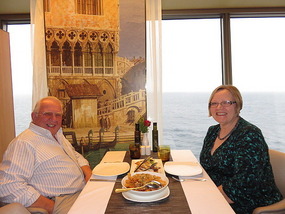
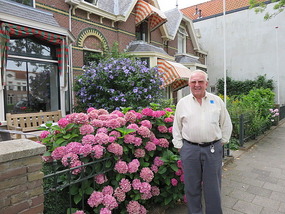
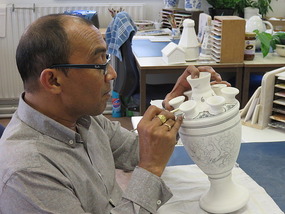
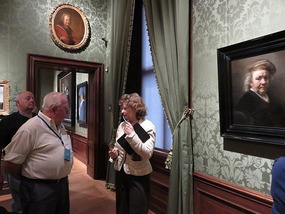
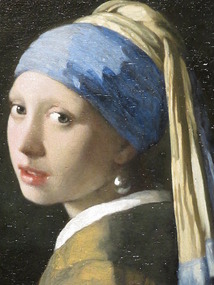









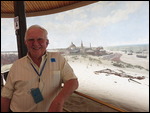
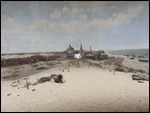
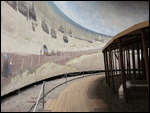
2025-05-23